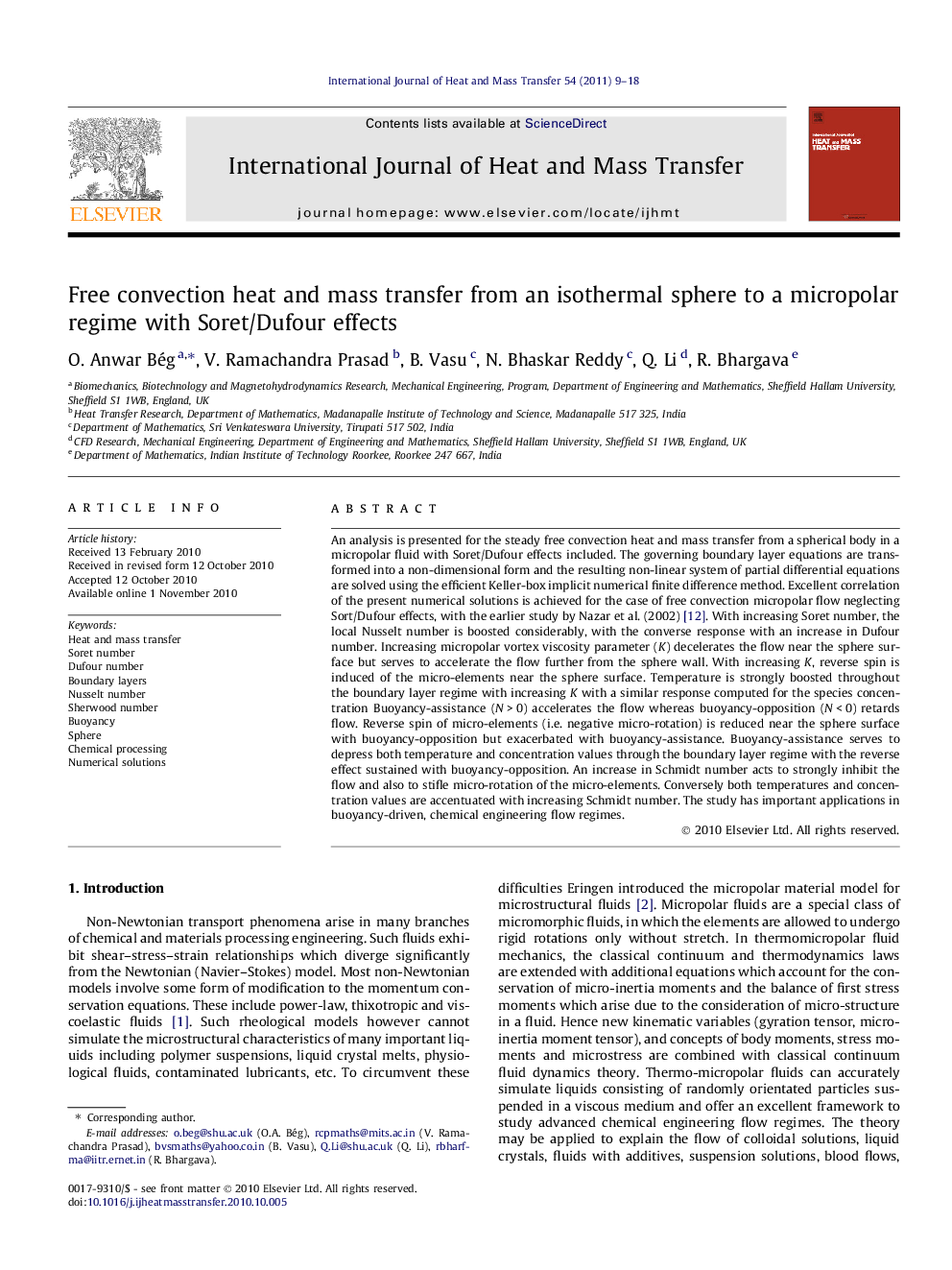| کد مقاله | کد نشریه | سال انتشار | مقاله انگلیسی | نسخه تمام متن |
|---|---|---|---|---|
| 660510 | 1458113 | 2011 | 10 صفحه PDF | دانلود رایگان |

An analysis is presented for the steady free convection heat and mass transfer from a spherical body in a micropolar fluid with Soret/Dufour effects included. The governing boundary layer equations are transformed into a non-dimensional form and the resulting non-linear system of partial differential equations are solved using the efficient Keller-box implicit numerical finite difference method. Excellent correlation of the present numerical solutions is achieved for the case of free convection micropolar flow neglecting Sort/Dufour effects, with the earlier study by Nazar et al. (2002) [12]. With increasing Soret number, the local Nusselt number is boosted considerably, with the converse response with an increase in Dufour number. Increasing micropolar vortex viscosity parameter (K) decelerates the flow near the sphere surface but serves to accelerate the flow further from the sphere wall. With increasing K, reverse spin is induced of the micro-elements near the sphere surface. Temperature is strongly boosted throughout the boundary layer regime with increasing K with a similar response computed for the species concentration Buoyancy-assistance (N > 0) accelerates the flow whereas buoyancy-opposition (N < 0) retards flow. Reverse spin of micro-elements (i.e. negative micro-rotation) is reduced near the sphere surface with buoyancy-opposition but exacerbated with buoyancy-assistance. Buoyancy-assistance serves to depress both temperature and concentration values through the boundary layer regime with the reverse effect sustained with buoyancy-opposition. An increase in Schmidt number acts to strongly inhibit the flow and also to stifle micro-rotation of the micro-elements. Conversely both temperatures and concentration values are accentuated with increasing Schmidt number. The study has important applications in buoyancy-driven, chemical engineering flow regimes.
Journal: International Journal of Heat and Mass Transfer - Volume 54, Issues 1–3, 15 January 2011, Pages 9–18